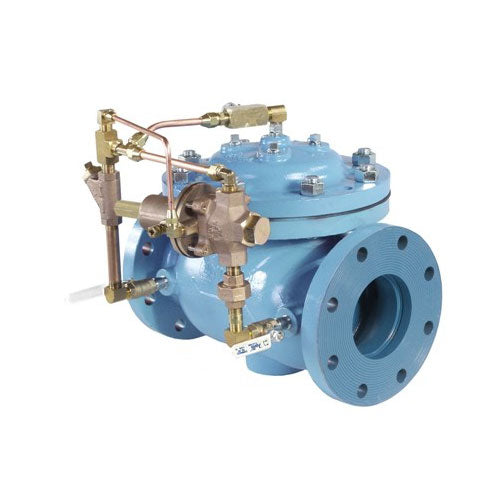
Maximize Power Financial Savings and Convenience With Advanced Structure Automation Controls
In the realm of contemporary architecture and facility monitoring, the assimilation of innovative building automation manages stands as a crucial advancement. The convergence of innovation and sustainability has birthed a new age where power efficiency, convenience optimization, and operational streamlining are no longer remote desires however obtainable realities. By utilizing the power of automation, structures can adjust, respond, and evolve in methods that were as soon as unimaginable. The capacity for substantial power financial savings and boosted convenience is not just a possibility but a promise waiting to be met. This paradigm shift in structure administration holds the vital to unlocking a globe where ecological conscientiousness and resident well-being harmoniously coexist within the walls of our frameworks.
Power Effectiveness Advantages
Power effectiveness benefits can significantly lower power usage and functional expenses in structures. By applying energy-efficient methods and technologies, building owners and drivers can achieve significant cost savings while additionally adding to environmental sustainability. Among the primary advantages of enhancing energy efficiency in structures is the reduction of energy costs. Energy-efficient systems, such as advanced building automation controls, can optimize the use of resources like home heating, lights, and cooling, causing reduced power costs in time.
In addition, boosted power effectiveness can lengthen the life-span of structure equipment and systems. By operating a lot more successfully, HVAC systems, lighting fixture, and other building elements experience less wear and tear, leading to decreased maintenance and replacement costs. Furthermore, energy-efficient buildings often regulate greater residential property values and rental prices, giving lasting monetary advantages to owners.
In addition, energy effectiveness can boost resident convenience and efficiency. Properly controlled interior settings with optimal illumination and thermal conditions develop an even more enjoyable and helpful work area, causing boosted employee contentment and performance. In general, the energy efficiency advantages connected with advanced building automation controls are multifaceted, encompassing expense financial savings, ecological stewardship, and passenger well-being.
Boosted Comfort Control
Enhancing convenience control in structure environments calls for an advanced assimilation of innovative automation systems for optimum owner health. By using advanced structure automation controls, centers can tailor the interior atmosphere to meet the certain demands and choices of occupants. control valves.
By integrating these advanced controls, buildings can not just enhance convenience yet additionally improve power performance by maximizing system operations based on real occupancy and use patterns. Eventually, focusing on owner convenience with advanced automation systems leads to an extra pleasurable and much healthier indoor setting.
Operational Efficiency Improvements

Additionally, the implementation of real-time monitoring and analytics devices makes it possible for structure drivers to identify energy ineffectiveness and functional anomalies immediately. By constantly keeping track of energy use patterns and system performance metrics, adjustments can be made in real-time to enhance energy consumption and ensure peak operational performance. control valves. Furthermore, incorporating need reaction strategies into structure automation controls can additionally improve functional effectiveness by dynamically changing energy use based on grid conditions and pricing signals
Indoor Climate Optimization
Efficient indoor climate optimization is an essential aspect of building automation controls, making sure occupants' comfort and wellness while optimizing energy cost savings. By utilizing advanced sensors and controls, constructing automation systems can Look At This continually readjust and monitor temperature, humidity degrees, air high quality, and ventilation to produce an optimum interior atmosphere. Keeping regular and comfortable problems not only enhances owner satisfaction yet also enhances efficiency and general well-being.
Interior climate optimization additionally plays an important duty in energy efficiency. By fine-tuning cooling, air flow, and home heating systems based on real-time information and occupancy patterns, constructing automation controls can substantially decrease energy consumption - control valves. For circumstances, executing approaches such as demand-controlled air flow and thermal zoning can aid lessen energy waste while guaranteeing that each location of the structure receives the necessary conditioning.
Sustainable Setting Creation
Building automation controls not just maximize indoor environment problems for power efficiency and passenger convenience however additionally lay the foundation for creating a sustainable environment through critical monitoring of resources and systems. By integrating advanced structure automation technologies, such as sensing units, actuators, and smart software program, facilities can keep an eye on and change power usage in real-time to reduce waste and reduce their carbon footprint. These systems make it possible for anticipating maintenance, determining possible issues before they intensify and maximizing tools efficiency to boost durability and efficiency.
Furthermore, sustainable atmosphere creation extends beyond power management to encompass water conservation, waste decrease, and interior air quality improvement. Structure automation controls can regulate water usage, find leakages, and great site make sure proper waste disposal methods, contributing to total sustainability initiatives. Furthermore, by regulating and keeping track of air flow and purification systems, these modern technologies boost resident health and efficiency while decreasing energy usage connected with HVAC procedures.
Final Thought
To conclude, progressed structure automation regulates offer substantial benefits in terms of energy savings, convenience control, operational efficiency, interior environment optimization, and creating a lasting atmosphere. By executing these controls, buildings can attain optimum efficiency while lowering power consumption and boosting owner convenience. It is apparent that making use of sophisticated automation modern technology is important in boosting structure efficiency and creating a more sustainable future.
Energy effectiveness benefits can considerably decrease power intake and functional costs in structures. On the whole, the power effectiveness advantages connected with advanced building automation controls are multifaceted, including expense savings, environmental stewardship, and passenger wellness.
Additionally, including need feedback techniques into building automation controls can further enhance operational effectiveness by dynamically changing power usage based on grid problems and prices signals.
Structure automation controls not only maximize interior climate problems for power efficiency and passenger convenience yet also lay the foundation for developing a lasting environment with critical administration of sources and systems.In final thought, advanced building automation regulates deal substantial benefits in terms of energy cost savings, convenience control, functional efficiency, indoor environment optimization, and producing a sustainable setting.